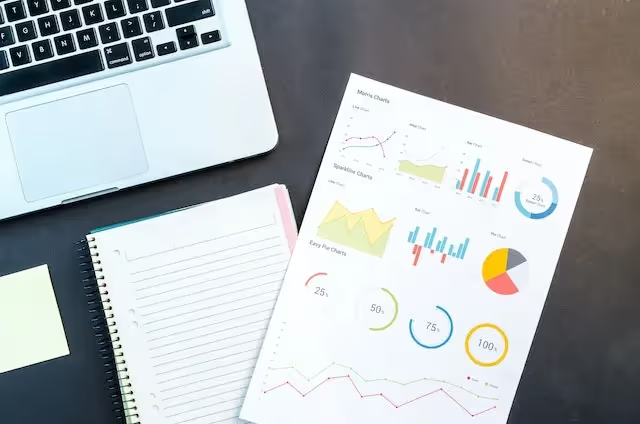Continuous vs. Discontinuous Measurement (ABA)
Data collection methods in ABA involve the therapist counting the specific amount of times a behavior occurs or each instance when it happens.

.avif)
Continuous Data Collection
When a professional decides to use continuous data collection, they will use different collection methods that are capable of measuring every occurrence of a behavior.
With these methods, the professional will either count the specific amount of times a behavior occurs or each instance when it happens.
There are several systems that a professional can choose that provide continuous data, and now, we will go over a few of the different types of data collection that are considered continuous.
Frequency
Frequency is an easy collection data system that falls under continuous data collection. It is a simple account of how often the behavior occurs, and it uses simple tally marks or small objects to keep track.
An example would be for the professional to have small beads in their pocket, and when they witness the behavior, they will move one bead to an empty pocket to be able to count the occurrences at the end of the session. Using frequency to measure data is best with behaviors that:
- Have a clear beginning and end
- The rate can accurately be counted
Example of a frequency data sheet that can be used.
Rate
Rate measurements are best used when there isn't a set time duration for each session.
Instead of counting each time it occurs, like frequency, the rate is based on the number of times the behavior occurs over some time.
To calculate the rate of behavior, the professionals will divide the frequency by the duration of the session, and the rate is expressed as a number per unit of time.
Here is an example of an ABA rate data sheet.
Discontinuous Data Collection
Unlike continuous data collection, discontinuous data collection is the opposite. It uses collection methods that only are a sample of behavior that occurs in a session in small increments of time.
Depending on the environment, discontinuous data collection could be easier to count, but it is not as accurate as continuous data collection.
Partial Interval
This data collection method is where the professional records data in broken up segments or intervals throughout the session. Partial Interval is best used when behavior doesn't have a clear start and stop.
The behavior also occurs at such a high rate that it's impractical to attempt to count each occurrence, or if there is an estimate of the frequency of the behavior is acceptable.
Whole Interval
With Whole Interval fat collection, the professional will break the session up into equal parts or intervals.
This method is usually used when the behavior occurs over long periods of time.
This method might also be used when it is acceptable to use an overestimate of the targeted behavior, or when it is considered to be impractical to use duration recording in the teaching setting.
Other Data Collection Methods in ABA
Continuous and discontinuous data collection are not the only two types of data collection methods available. However, they are some of the easiest forms of data collection. Here are a few other types of data collection that professionals might use.
ABC Data Collection
ABC Data is often used when a professional is deducting a functional behavior assessment (FBA). This type of data collection method looks at what happens before and after the behavior happens that the professional is interested in.
This type of data collection is mainly used to provide professionals with the information they need to help predict and prevent the targeted behavior.
Scatterplot Data Collection
This type of data collection is best used when the professional needs to provide information of the behavior occurring across different parts of the day, either in activities or timeframes.
Plus, it allows for visual analysis when there are patterns in the behavior that can be collected.
Pros and Cons of Each Data Collection Method
Each type of collection method has its pros and cons, and some are better to use in different situations. Now that we have gone over the different types of data collection methods, here are some key points for their pros and cons that you should consider.
Frequency
Pros:
- Easy to count
- Works best with behaviors that have a clear beginning and end
- Can be measured with a simple data sheet or use of small objects
Cons:
- Doesn't take into consideration the length of time the session lasts
Rate
Pros:
- Rate is only measured during certain parts of the day
- Sessions don't have to be consistent
Cons:
- Rate will not keep track of how often the behavior occurs as accurately as frequency
Discontinuous Data Collection
Pros:
- Used when the behavior needs to be taken in intervals
- Had some visual data options for professionals to use
Cons:
- Isn't best when the data needs to be accurate
- Not good when data can't be easily broken down into intervals
Recent News
Related articles

Working With Autistic Children: 10 Career Options
Want to work with autistic children? Here are 10 career options for you to consider.

What Is The Age Limit For ABA Therapy In Indiana?
Find out what the age limit is for receiving Applied Behavior Analysis (ABA) therapy in Indiana.

What Is The Age Limit For ABA Therapy In Arizona?
Find out what the age limit is for receiving Applied Behavior Analysis (ABA) therapy in Arizona.

Verbal Operants In ABA: Definition & Examples
In Applied Behavior Analysis, verbal operants are a type of verbal behavior.

Token Economy: Examples & Applications in ABA
A token economy is a procedure that was developed to help reduce maladaptive behaviors and increased desire behaviors by providing a tangible conditioned reinforcer.

Trigger Analysis In ABA: Definition & Examples
Trigger analysis is a segment of ABA therapy where children are taught by therapists to pinpoint the behaviors and emotions that happen before, during, and after an event that takes place.

Variable Ratio Schedule & Examples
A variable-ratio schedule is a random reinforcement where responses are reinforced following varied responses afterward.

Task Analysis In ABA Therapy: Examples & Strategies
Task analysis is a process of teaching that divides complicated activities into sections involving easier steps for students to more easily take.

Stimulus Equivalence In ABA: Definition & Examples
Stimulus equivalence shows how relationships can manifest among different types of stimuli in different situations.

Speech Therapy For Autism: ABA vs. Speech Therapy
ABA therapy can help individuals with speech impairments learn to better identify and utilize the language skills they already have.

Stimulus Control Transfer ABA: Definition & Examples
Stimulus control is defined as an expression used to detail circumstances where a behavior is triggered by the existence or absence of a stimulus.

Social Validity In ABA: Definition & Examples
Social validity is the acceptance of interventions concerning behavioral changes.

